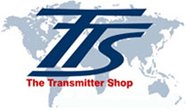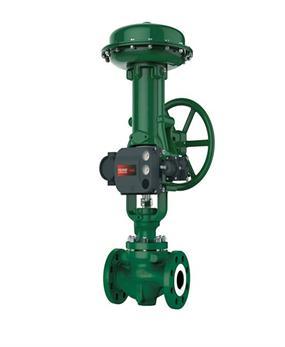
Fisher 546 Electro Pneumatic Transducer
Availability: In stock
Specification
Available Configurations:
- Electro‐pneumatic signal transducer with
explosion‐proof case and cover
The 546 can be ordered with or without a Fisher 67
filter regulator. A 51 mm (2 inch) circular supply
pressure gauge may be mounted on the regulator.
- 4 to 20 mA DC
- 10 to 50 mA DC,
- 1 to 9 VDC,or
- two‐way split range using any half of one of the
standard input signal spans
- 4 to 20 mA DC Input Signal: 176 ±10 ohms
- 10 to 50 mA DC Input Signal: 90 ±10 ohms
- 1 to 9 VDC Input Signal: 1300 ±50 ohms
- (temperature‐compensated circuit)
- Ranges:0.2 to 1.0 bar (3 to 15 psig), 0.4 to 2.0 bar (6 to 30
psig), 0 to 1.2 bar (0 to 18 psig), or 0 to 2.3 bar (0 to 33 psig) - Action: The 546 is field‐reversible between direct and
reverse action.
- Recommended: 0.3 bar (5 psig) higher than upper range limit of output signal.
- Maximum: 3.5 bar (50 psig)
- At 1.4 bar (20 psig) Supply Pressure:0.6 normal m3/hr (21 scfh)
- At 2.4 bar (35 psig) Supply Pressure: 0.8 normal m3/hr (30 scfh)
- At 1.4 bar (20 psig) Supply Pressure: 12.9 normal m3/hr (480 scfh)/li>
- At 2.4 bar (35 psig) Supply Pressure: 18.5 normal m3/hr (690 scfh)
- Reference Accuracy: ±0.75% of output signal span
- Independent Linearity: ±0.50% of output signal span
- Open Loop Gain: 26
- Frequency Response: Gain is attenuated 3 dB at 20 Hz
with transducer output signal piped to a typical
instrument bellows with 305 mm (12 inches) of 1/4
inch tubing - Electromagnetic Interference (EMI): Tested per IEC 61326‐1 (Edition 1.1). Meets emission levels for Class
A equipment (industrial locations) and Class B
equipment (domestic locations). Meets immunity
requirements for industrial locations
- Hazardous Area:
- CSA—Explosion-proof, Dust Ignition‐proof, Div 2
- FM—Explosion‐proof, Non‐incendive
- NEMA 3R, CSA enclosure 3
NEMA 3R mounting orientation requires vent location to be below horizontal.
- Zero and Span Adjustments:Screwdriver adjustments located inside case
- Supply Pressure: 1/4 NPT internal located on side of case, (or located on the 67CFR filter‐regulator if mounted)
- Output Pressure: 1/4 NPT internal located on side of case
- Vent: 1/4 NPT internal with screen located on relay
- Electrical: 1/2 NPT internal located on bottom of case
- 4.1 kg (9 pounds)
Description
Fisher® 546
Fisher® 546 transducers receives a direct-current input signal and use a torque motor, nozzle-flapper, and pneumatic relay to convert the signal to a proportional pneumatic output signal. Nozzle pressure, which operates the relay, is also piped to the torque motor feedback bellows. This provides a comparison between input signal and nozzle pressure and corrects errors in nozzle pressure.
- Vibration Resistance—High natural frequency of torque motor moving parts results in negligible vibration influence. Also meets typical seismic requirements for nuclear service.
- Easy Adjustment—Screwdriver adjustments for span and zero are conveniently located and have arrows indicating rotation to increase settings.
- Field-Reversible Action—No additional parts required to reverse action of 546 or 546NS; 546S versions cannot be reversed in the field but can be purchased either direct or reverse acting.
- Simple Relay Removal—Integrated pneumatic relay is mounted outside case and can be removed without disturbing electrical or pressure connections or impairing explosion safety.
Technical Data-Sheet








 Free Expert Consultation
Free Expert Consultation Quick Turnaround Shipment
Quick Turnaround Shipment



